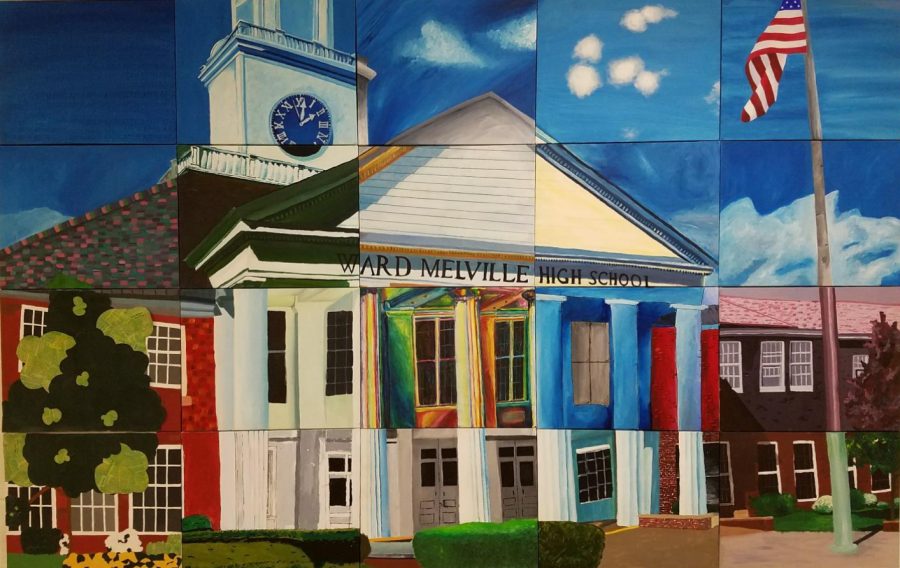Why Art?
March 3, 2018
This year I took Media Arts II and Drawing and Painting as a junior, despite having fulfilled my art/music requirement two years ago. I would willingly spend a total of 82 minutes making art during the day, not including any homework given from either class. I like art because it is relaxing, even with the stress of school-required deadlines, but most importantly, it makes me happy. Despite this, I still wonder sometimes why I spend so much time on something that I will probably not do in my future. I thought for some time, but to no avail, so I decided to find out why other students put in the time to do art.
Today I took the halls and classrooms of Ward Melville to find my answer.
I began my search in my 6th period Drawing & Painting class, trying to find out exactly what it is that people like about art. Senior Long Yin, who is applying to art schools and is currently taking 5 different art classes at Ward Melville, believes in the value of the message that one can send through art. To him, art can convey just as much as a book, and can even be used “to interact with people socially.” He added, “Art is a great way to express my feelings and messages. […] If I call myself an artist, I feel like I the confidence and potential to do anything.” Different reasons motivate Alex Charpin to do art. He is a senior who has gone past his art requirement but does not see art school in his future and prefers engineering and set-building. “I want to learn how to draw things that I can build, because [I am passionate about] the engineering side of set building,” Charpin commented. Yet others make art just because it’s fun, creative, and yields beautiful pieces. Some, including junior Jeanette Orlando take art classes because they enjoy it… and quite frankly, “it’s not math.”
Taking art classes in and outside of school is a huge time commitment. Ward Melville students produce beautiful works of art, but many of them take weeks to months to complete. On top of that, weekly assignments are expected, with varying degrees of quality in the different levels of classes. I now wondered why people would put in the time to make art. To answer my question, Kelly Allen, a senior who is considering majoring in fashion merchandising and minoring in graphic design, explained how “the more you practice, the more you are happy and confident with your artwork, [so] you can go outside your box.” Junior Eva Reznik, an aspiring cinematographer, described how she loses track of time when making art. “When I draw, six hours can pass and I wouldn’t even notice it,” she said, beginning to grin, “but that time is definitely worth it.” Maybe the time doesn’t matter at all when doing something you love.
Science is here to back up these students’ sentiments. However, some studies regarding art education yield confusing results: A 2002 report by the Arts Education Partnership revealed that schoolchildren exposed to drama, music and dance are often more proficient at reading, writing, and math; similarly, in a 2006 study on art education, the Solomon R. Guggenheim Museum found a link between arts education and improved literacy skills. On the contrary, a study published a year later stated the arts don’t actually improve academic performance. This aspect does not necessarily matter, however, because the overwhelming majority of art education-related studies show that in some way, shape, or form, art helps students and communities, raises achievement and academic success, lowers disciplinary infractions while raising graduation rates, and in the smallest sense, provides a creative outlet for students. In summary: art is good and totally worth the time. Ward Melville students seem to agree.



